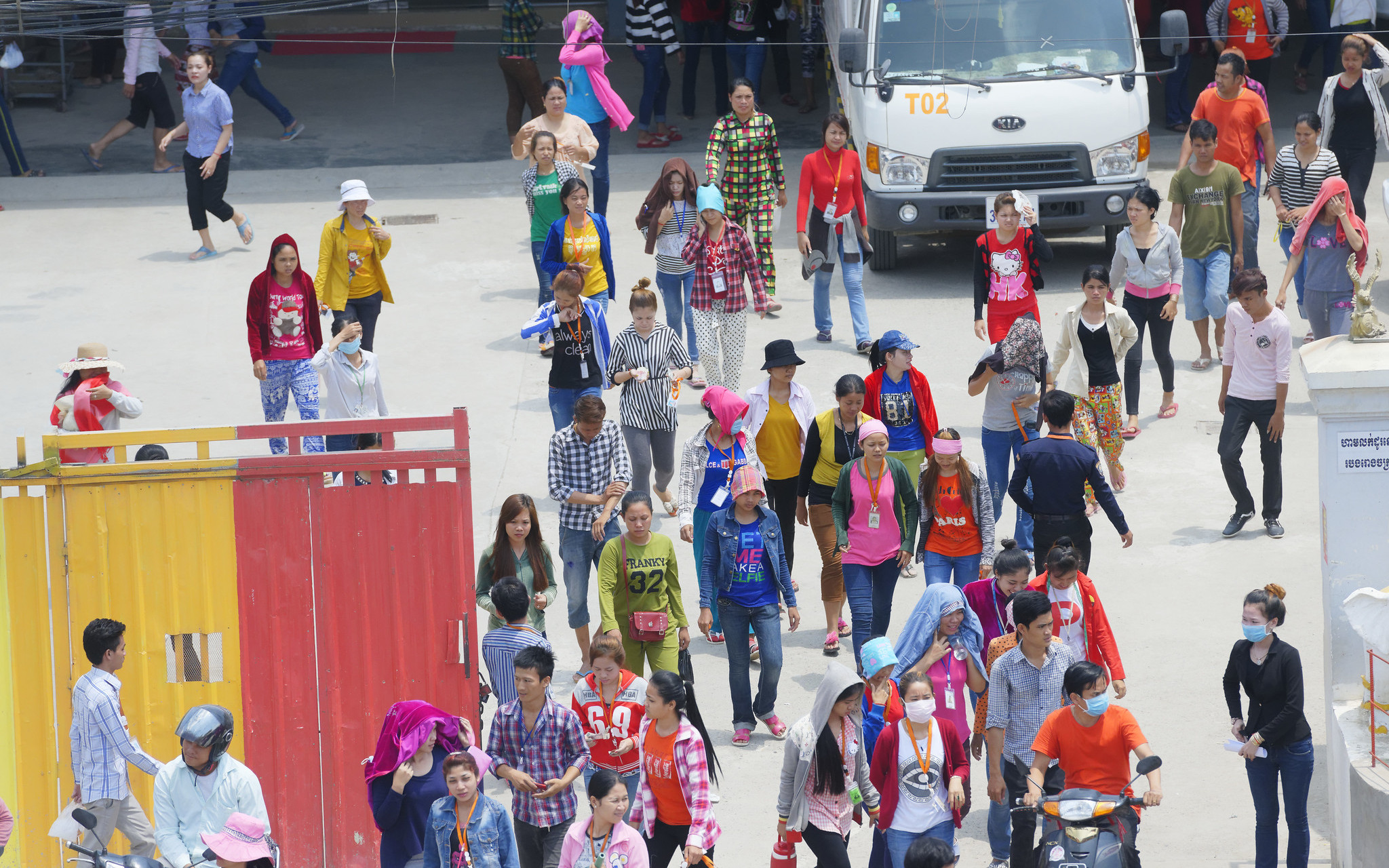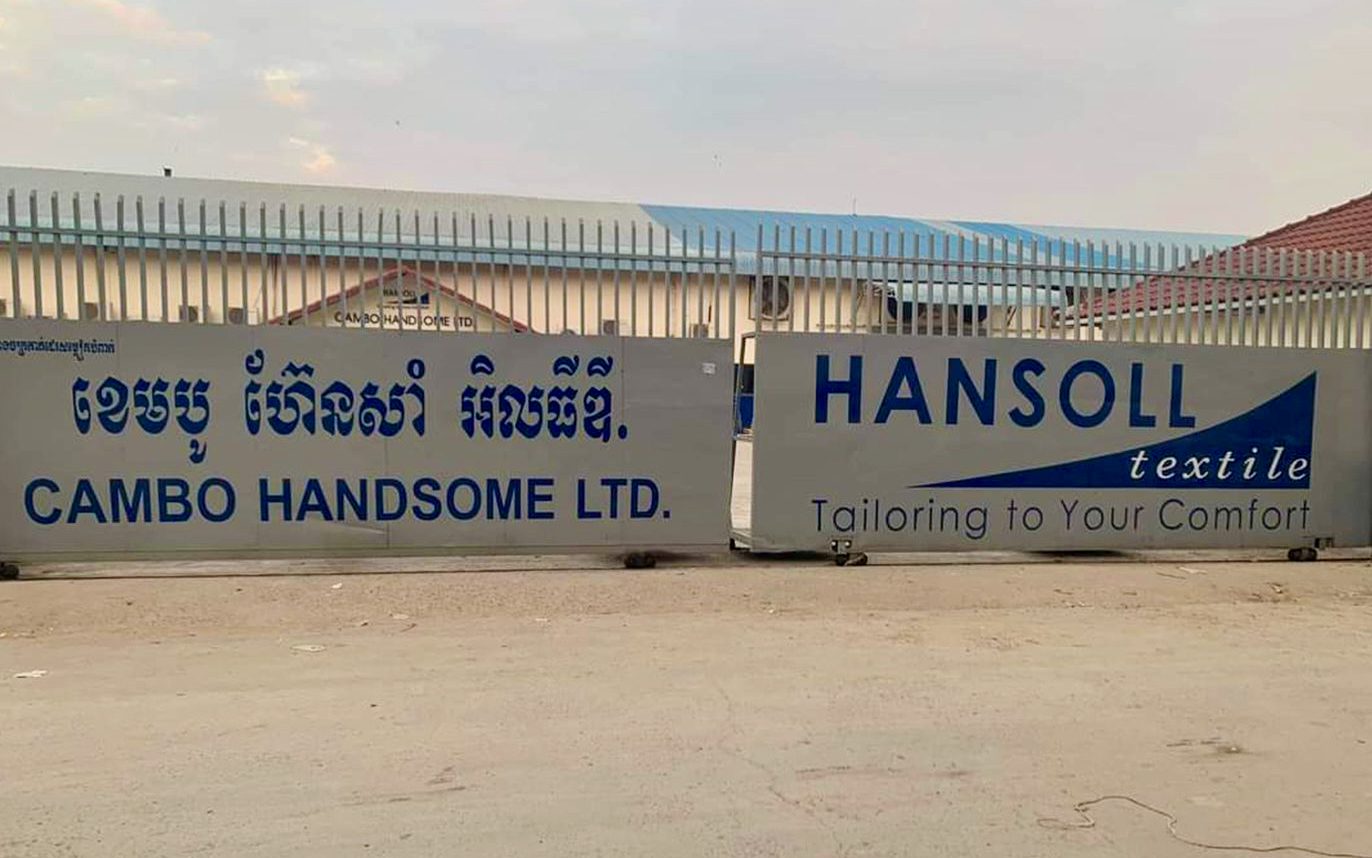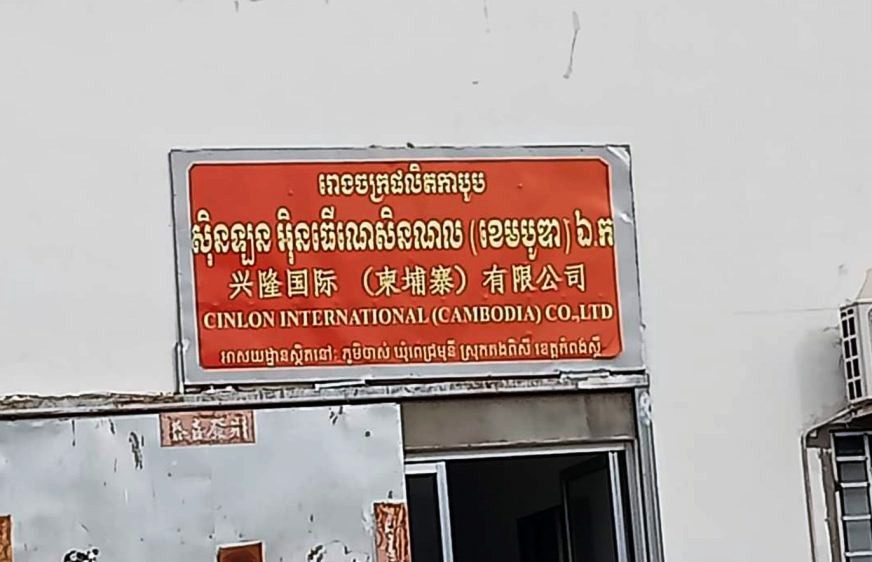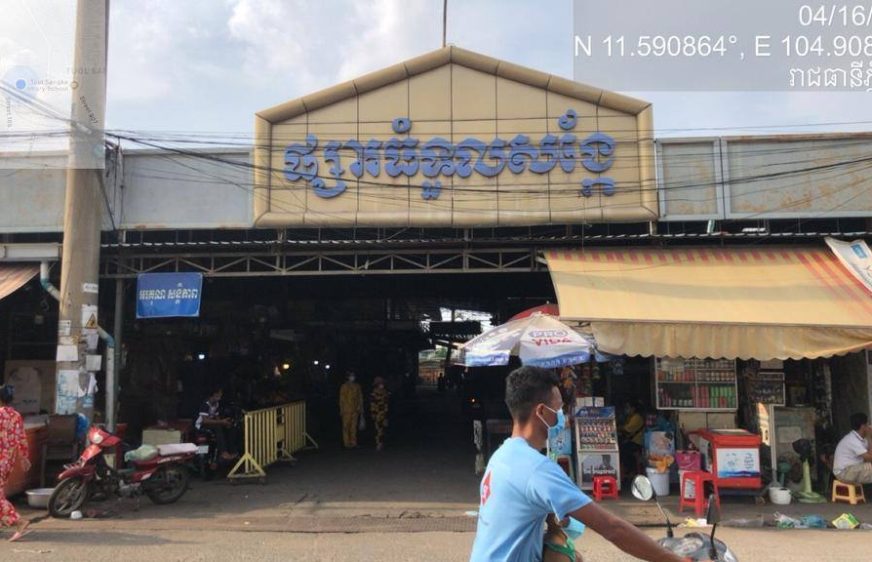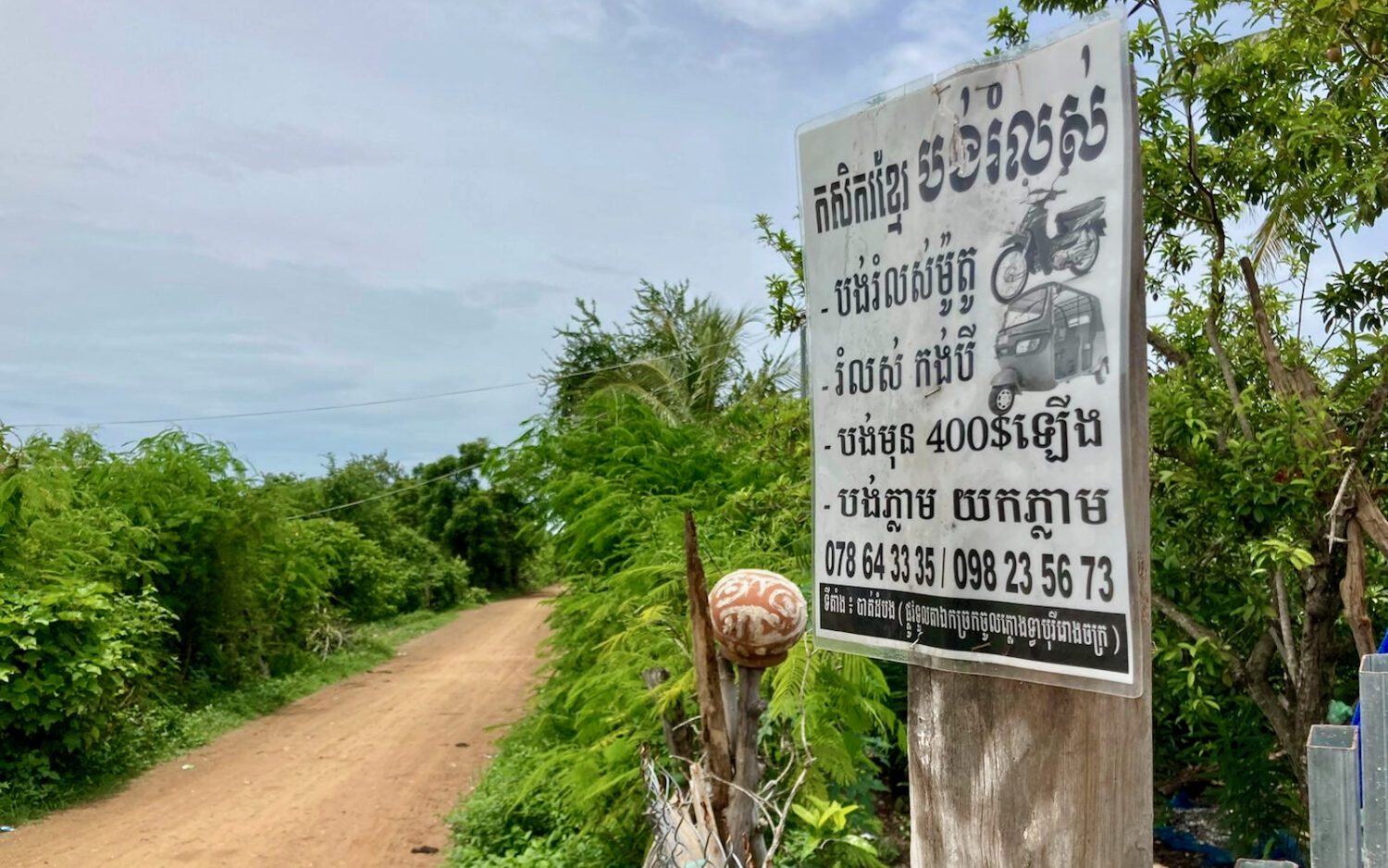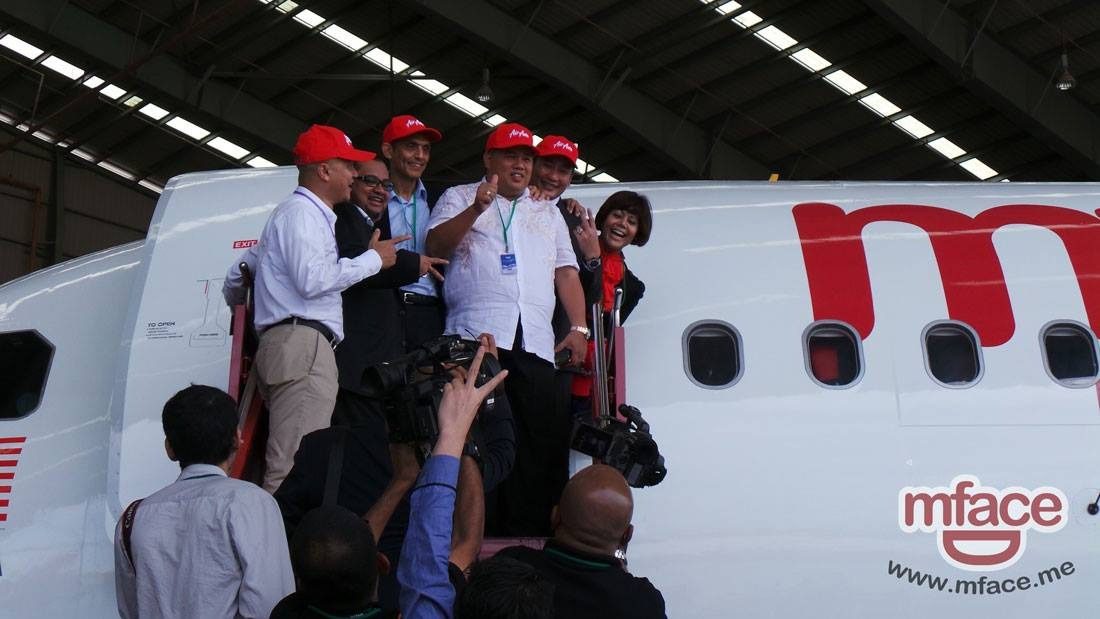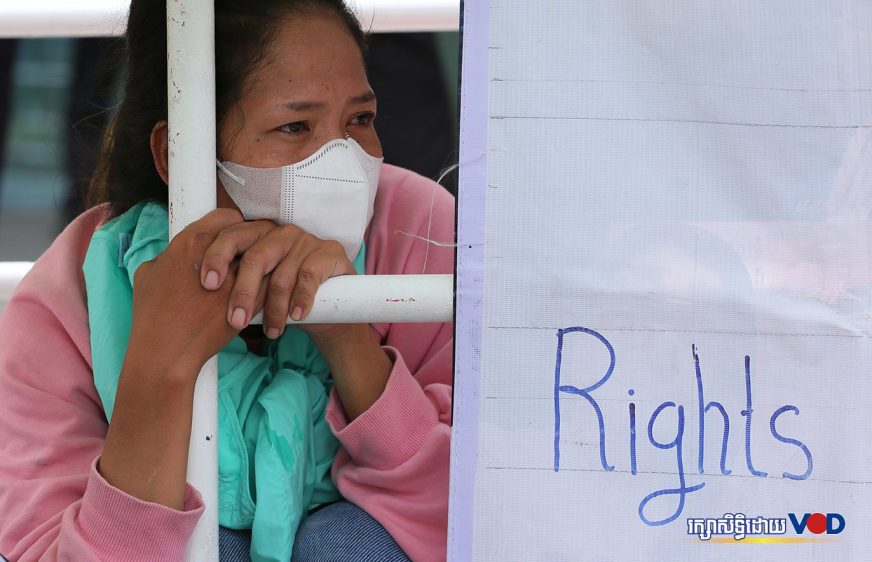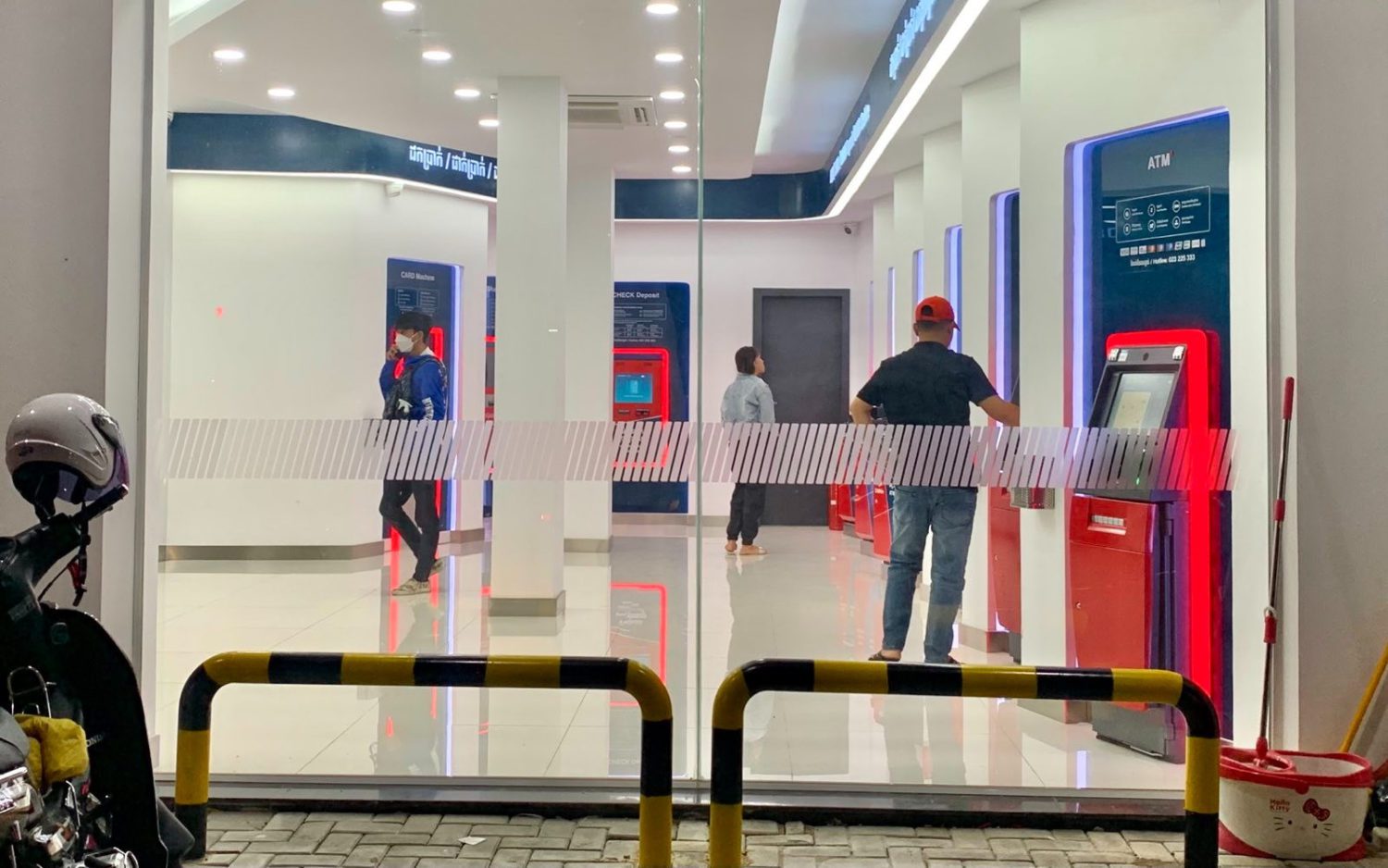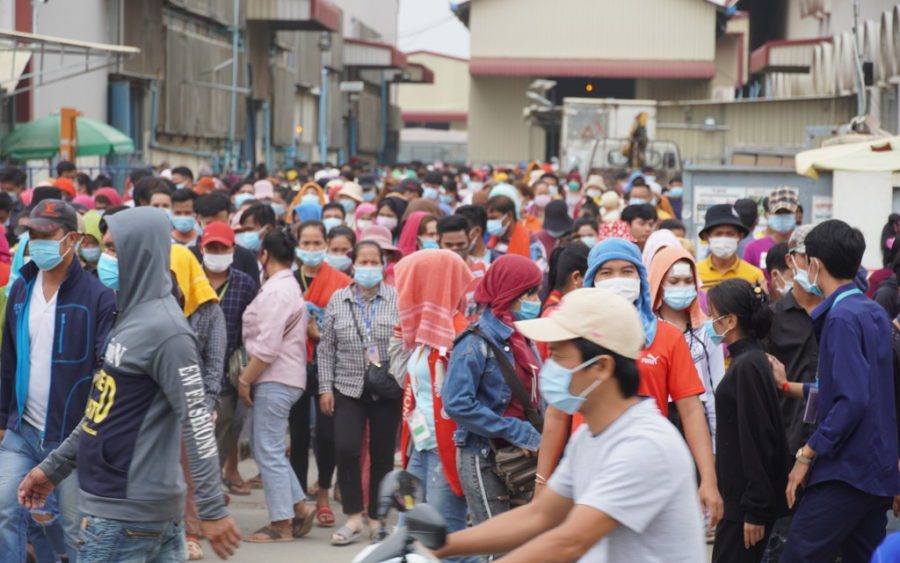Yorn Riya has not been paid since January.
She was 25 years old when she left her family’s modest home in Prey Veng Province to find work in a Phnom Penh garment factory. For years, she had watched alongside her family as the months between rainfalls grew longer and the rice withered in the fields. Once the wet season arrived, the harvest from their small plot—less than a single hectare—could only feed Riya’s family for six months. The other half of the year, they borrowed paddy rice from their neighbours to survive, paying them back with interest from their own crop when it finally came.
For Riya’s family, as for many Cambodian farmers, growing food requires taking on debt. When the time for planting comes, they borrow to buy fertiliser for the short-term seedlings, petrol to power the pump that floods their dried-up fields and pesticide to keep the first shoots safe until harvest. Each purchase costs hundreds of US dollars; each needs to be paid back from the crop that would otherwise feed the family throughout the year.
“It was a cycle, and it kept happening,” Riya, 39, says. “There was no hope for us to get out of it.”
Now, she has been forced back into that cycle. In January, Riya travelled back to Prey Veng to see her family, after losing her factory job in June 2020 amid the global COVID-19 pandemic. By late February this year, she heard news of community-level transmission in Cambodia and decided to stay in the less densely populated province for fear of being infected in Phnom Penh.
Riya’s family is not unique in their economic struggles. Many of Cambodia’s smallholder- farming households send a daughter to work in a garment factory or a son to scale the scaffolding of a rising Phnom Penh skyscraper. Increasingly driven by debt, drought and desperation, a generation of Cambodians have left their families in provincial villages in search of steady work in the capital or abroad.
According to the World Bank, three out of 10 Cambodian households had at least one migrant worker sending remittances back home before the COVID-19 outbreak. Now that the global pandemic has driven hundreds of thousands of these wage-labourers out of work, many of them are finding they have little left to go home to.
Yang Sophorn, president of the Cambodian Alliance of Trade Unions, says that scraping even a meagre living from the soil was not an option for many of the factory workers who had lost their livelihoods.
“Generally, the parents who allow their children to come to work in Phnom Penh and other urban areas, some of them have sold their land and farm already,” she says. “They do not have any farmland to go back to.”
Although the majority of the country’s rural population is financially dependent on agriculture, the World Bank reports that two thirds of rural households face seasonal food shortages every year—a worrying figure, considering that 80% of Cambodians live in rural areas. Of that number, most maintain plots of less than half a hectare, while more than one in 10 are landless.
Sovann*, a 36-year-old worker and union representative at a garment factory in Phnom Penh, left Kampong Cham Province when he was 22 to work alongside his older sister and help support their family. Straining to be heard over the roar of the late afternoon rain on the tin roof of his home in Kandal Province, he says his parents’ two small plots of land are too small to be worth the effort of farming. Instead, he followed the Mekong River down to Phnom Penh in search of work.
“Farming takes time,” he adds. “With good techniques, you can get the harvest in three to six months. But without those techniques, you can farm only once a year. It will not be enough to support your family. That is why most decide to come to work in factories. They think the land is too small to make sufficient income, so it is better for them to work in the factory.”
Before the pandemic, the factory Sovann worked at employed 1,800 people making shirts for Western brands including Lacoste and Marks & Spencer. Now, he says, that number has more than halved.
Caught Between Crises
When news of the pandemic first broke, the Cambodian government urged laid-off urban labourers to return to the countryside to work on the nation’s farms and fisheries. Prime Minister Hun Sen spoke of the looming public health crisis as an opportunity to redirect funds and manpower to the agricultural sector.
But for many Cambodians, farming is not the social safety net the government would have them believe. Laurie Parsons, a British national who has been researching the impact of mass labour migration and climate change in Cambodia for more than a decade, says most smallholder farmers depend heavily on income from relatives working in urban factories.
“What we’ve actually seen to a much greater extent in recent years is that the garment industry, and particularly the women working in the garment industry, are supporting agriculture. It’s been hugely difficult for smallholder farmers,” he says.
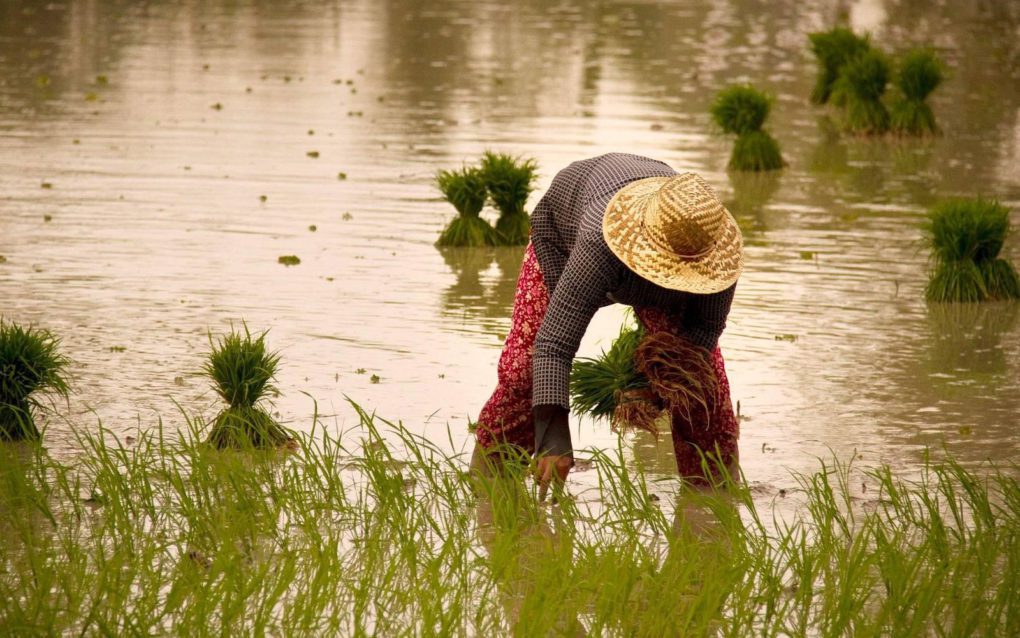
Cambodia is among the countries most vulnerable to climate change. As the world warms, rainfall patterns have been shifting, leading to longer and harsher droughts, brutal rainy seasons and destructive flooding. In 2020, at least 42 people died in floods nationwide, leaving 161,000 homes damaged and devastating more than 120,000 hectares of farmland.
Caught between a mounting climate crisis and ever-increasing levels of household debt, Parsons says, many rural households are not even able to sustain themselves, let alone absorb the country’s dislocated labour force. Without input from family working in the garment sector, he explains, most small-scale farms will not function.
That input looks drastically different than it did just two years ago. Since the early days of the COVID-19 pandemic, Cambodia’s garment workers have been among the hardest hit by the virus’s spread and the economic shockwaves that followed. In June 2021, the United Nations in Cambodia said layoffs, factory closures and unpaid absences had heavily impacted the livelihoods of the more than 900,000 workers employed in the sector. Of those workers, four out of five were women. Even before the country’s first recorded COVID-19 death in March 2021, the economic downturn that followed widespread outbreaks in the United States and Western Europe throughout 2020 led to garment exports dropping by almost 10% since the start of the pandemic.
Work in Phnom Penh factories was already growing precarious for some before the pandemic. In early 2019, Riya’s factory shut down operations. It reopened its doors on new premises soon thereafter, and like the other laid-off workers, Riya was told she could reapply for a job at the new location. This time, though, employees would only be given three-month contracts. She had been working there for 10 years. She decided to find a new employer.
In April 2020, Riya’s new factory suspended workers’ employment for two months due to the pandemic. When they returned to work in June last year, she and some other workers were told their contracts had been terminated. She has been without a factory job ever since.
From the Field to the Factory
When Phnom Penh and the neighbouring city of Takhmao went into lockdown in April, as many as 1.2 million factory workers were cut off from their workplaces, with more than 400,000 of these workers trapped in the most restricted “red zones” and not allowed to leave home except in emergencies. Later, the virus spread into hundreds of factories scattered throughout the provinces, where lorry-loads of labourers packed sternum to spine are shuttled from cramped lodgings onto packed factory floors.
Despite the harsh conditions in factories, many parents view steady work sewing sleeves onto sweaters to be a more forgiving career for their children than a life of long days bent double beneath the sun, according to unionist Sophorn.
“Their parents think that when children come to work in Phnom Penh, they can live a better and easier life,” she says. “As to whether their lives have improved or not, as we can see, they have not. The children who come to work in Phnom Penh, they have to work so hard. There is no weekend, only overtime. They spend a lot of time in the factory from morning till night. So this does not give them any opportunity or spare time to study or learn new skills.”
This is a life Riya knows only too well. When she first moved to the capital, working and living there was a challenge.
“I didn’t know anyone—I didn’t know Phnom Penh. I didn’t have any skills or any education. It took me a while to find work,” she says. “But the hardship I faced at home made it bearable.”
When Riya finally found a job, it was in the packing unit of a garment factory. After three months, she and other workers were trained to sew, and she was transferred to the sewing unit.
In her first year, Riya’s base salary was about US$50 a month, the garment sector’s minimum wage in 2007. But working overtime, she could earn up to US$90, of which US$75 went to support her family on their failing farm in Prey Veng. With the money she sent home, her family was able to renovate their wooden home that houses three generations. When they can, they buy chickens and buffaloes to raise for extra cash. Riya herself kept just US$15 each month to cover her daily needs, eating only white rice seasoned with instant noodle flavouring. But while her salary has risen steadily over the years as Cambodia’s unions stepped up their campaign for a living wage for factory workers, the cost of living in the capital has risen with it.
Lost Jobs, Rising Debt
The roots of Riya’s struggle go back to the abrupt liberalisation of Cambodia’s economy in the early 1990s. Reeling from its Cold War victory, Western powers laid the nation’s economy open to a world newly united under a US-led global economic order that pushed rapid economic growth over any significant state role in shaping people’s livelihoods. From an agrarian economy still staggering to its feet after decades of civil war, foreign investors forged a manufacturing industry built on low-skilled labour and low wages, bringing in textiles to be stitched together and exported in bulk to the wealthy West.
Preferential access to European and US markets, cheap labour and generous government tax incentives brought in a flood of investment led by eager investors from Hong Kong, Taiwan, Singapore and Malaysia; nearly a third of total foreign direct investment inflows into the country between 1995 and 2003 went directly into the apparel business. In five years, from 1994, Cambodia’s factories multiplied from seven to 189; by 2019, there were more than 1,000 garment and footwear factories, employing more than 900,000 people, the vast majority in or around Phnom Penh. The same year, the garment and footwear sector contributed 17 percentage points to the country’s real GDP growth.
Flush with success, the government decided to put more assets up for sale: under a controversial economic land concession scheme, vast swathes of Cambodian land were leased out to private companies to be reworked into large-scale plantations ready to churn out cash crops for export. Farming families like Riya’s, it seemed, had little role to play in this new Cambodia.
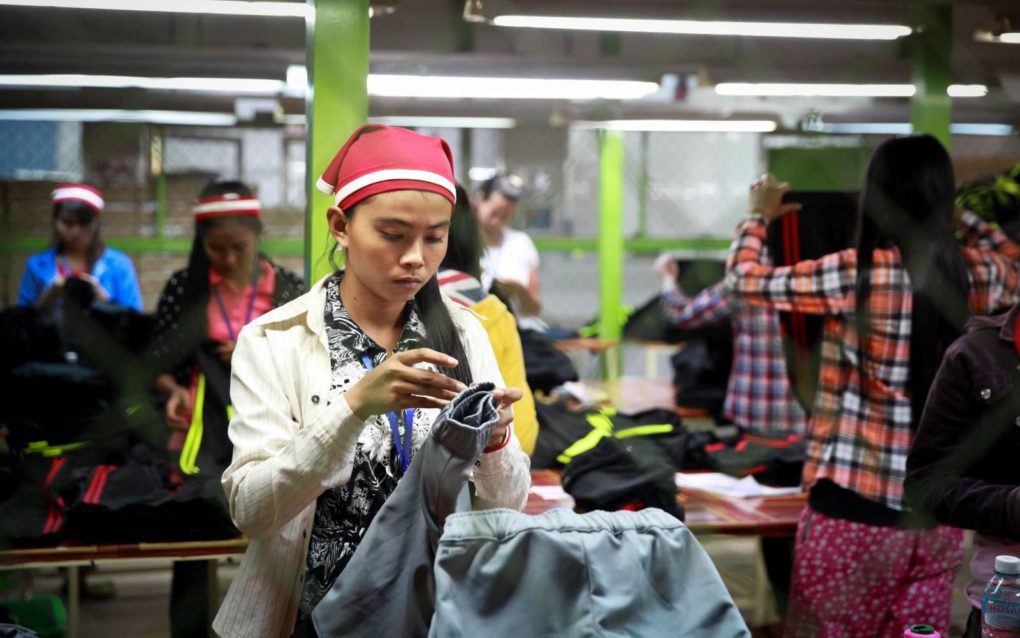
According to Parsons, the researcher, the explosion of investment in Cambodia’s garment sector is only half the story. Emboldened by the supposed possibility of generating profits while alleviating poverty, microfinance institutions also began to set up shop in even the most remote provincial towns, taking land titles as collateral for larger and larger loans, and generating larger and larger profits for their shareholders. Increasingly, MFIs have filled the gap left by long-neglected public services as families drive themselves deeper into debt to pay for healthcare, education and housing.
“What you’ve got is this transfer between urban workers making a lot more money than they used to—a genuine influx of cash flow,” Parsons says. “But a lot of that is going straight back out to microfinance [loan payments], and you have the compounding issue of climate change, essentially just making that rural economy harder to make money from.”
Although the government urged banks and microfinance institutions to allow borrowers to restructure their loans in the early months of the pandemic, just about 12% of borrowing households had benefited from restructuring by the end of 2020. Many of those who have been able to delay repayment still have to pay off the monthly interest. While it’s unclear just how many out-of-work Cambodians have sold off plots of lands to repay a debt or to bring in quick cash to see them through months of unemployment, Parsons says poverty and indebtedness have contributed to rising landlessness in the country.
“It’s something we can increasingly see, as people just can’t make their microfinance payments,” he adds.
Pav Sina, president of the Collective Union of Movement of Workers, says his union has lost more than 8,000 members due to lay-offs since the pandemic began—roughly 40% of its total membership. Without an income, he says, these workers would struggle to pay back the debts they had taken on.
“Many workers remain in Phnom Penh,” he says. “Some work in the informal sector; farming isn’t an option, as some do not have land. Farming is good for short-term food security, but it won’t pay off the debts that workers have.”
Now, Cambodian borrowers hold more than US$11.8 billion in microloans from MFIs and banks, according to figures published by the human rights organisation Licadho. By the end of 2020, the average microloan in the country was the highest in the world at around US$4,280—more than the annual income of 95% of Cambodians. For more than 15 years, these loan sizes have grown faster than people’s incomes.
Risking Infection
Naveth*, a 33-year-old garment worker from Kandal Province, took out a US$5,000 loan from a microfinance institution in 2019 to start a grocery business from her home. The plan was for her mother to manage the business while she worked in a factory’s ironing unit, using the combined income to eventually pay back the loan. But since community transmission of COVID-19 in late February left tens of thousands sick and hundreds dead, Naveth has left her job for fear of infection.
“I did not feel safe to go to do a COVID-19 test in Phnom Penh,” she says. “There were so many workers from many other factories. …If I am infected, it will infect my children. One of my children has a respiratory condition that recurs every few months. I am afraid he will not make it if he gets COVID-19.”
Out of work and lacking in formal education and skills, Naveth is now cultivating a 2,000-square-metre rice field owned by her mother in Kandal Province.
“It is not enough for us to eat,” she says. “That is why I had to find work in a factory. I followed my sisters to work in the factory.”
But her sister, one of four who all work in factories, also left her job in the factory’s packing division, afraid of bringing COVID-19 home to her young children. For Naveth’s sister, the pandemic could not have come at a worse time. She and her husband had taken out a US$15,000 loan from a local bank to start a catering business for weddings and funerals. Both were restricted once the virus broke out.
“Since the pandemic started, there was no business for us, but we have to pay back the interest every month,” she says. “It has been very tough for us.”
Naveth now relies on the income from her store, while her sister has set up a small stall selling meatballs in front of their house. But the pandemic has also hurt their new ventures. Through loan restructuring with their respective banks, the pair have been able to delay the repayment of the principal loan and only pay the interest each month—until the end of the year, at least. This option can raise the overall loan cost in the long term.
But Naveth says that the risk of returning to the capital’s crowded factories was not one she could afford to take.
“If I am infected with COVID-19, first of all, my family will be placed under quarantine at home,” she says. “I have no savings with which to stock up on food for them for the period. Who is going to work in the rice field if we all have to be quarantined? Who is going to earn to support the family?”
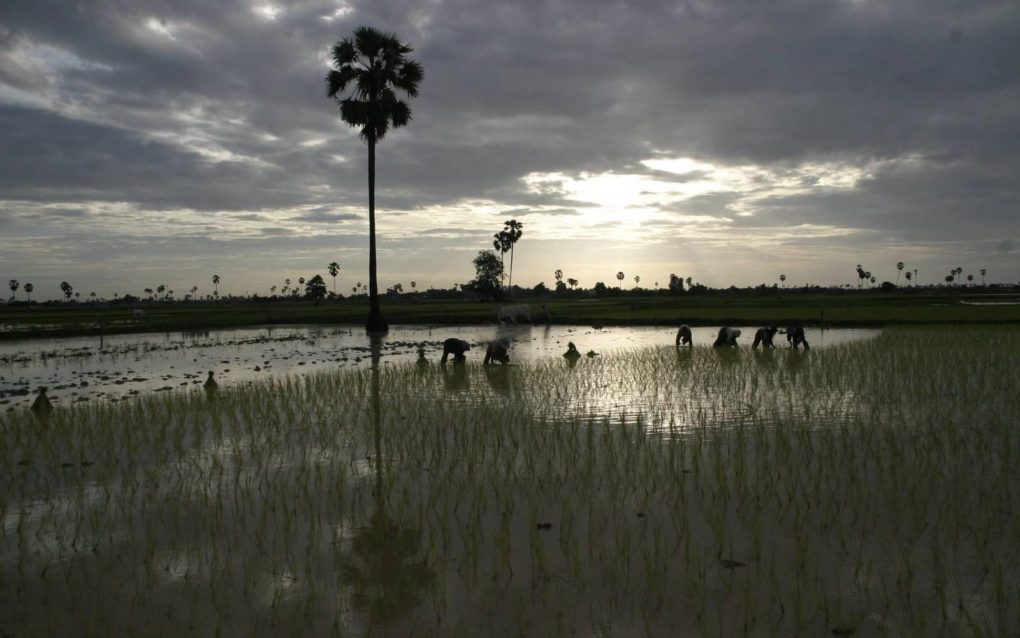
Impractical Solutions
Mak Mony, director of the Agriculture Ministry’s statistics and planning department, says the government is aware of the difficulties facing unemployed garment workers and their smallholder-farm families.
“We want to equip them with basic techniques where they can begin to farm,” he says. “We try to encourage and to guide them to consider farming for sale, not only for consumption.”
He adds that the government has also provided loans to farmers through its Agriculture and Rural Development Bank.
In 2020, the state-owned bank disbursed US$50 million in loans, ranging from US$10,000 to US$300,000, mostly to fruit, vegetable and livestock farmers and aquaculturists, its director-general Kao Thach told the Phnom Penh Post in March.
But without first forming farmer cooperatives to facilitate contract farming, Mony says, many farmers have struggled to find a market for their harvests.
Whether or not those cooperatives would have the land they need to support the shift from subsistence is another matter. In June 2020, the Land Management Ministry announced a $93 million project funded by the World Bank to provide land to landless and poor families. It was the third such joint project since 2008. Earlier, the government allocated 17,000 hectares of land to more than 5,000 families in the country.
This may not be enough. In a 2016 study by Mekong Region Land Governance project, researchers estimated that the growing rural population could need an additional 2 million hectares of land by 2030 in order to secure a livelihood, assuming secondary and tertiary industries like manufacturing are able to create 20,000 unskilled formal jobs every year to pull more and more people from the countryside to the cities.
In Prey Veng, Riya has made her choice. Rather than risk infection and unemployment in the capital, she wakes up every morning, takes care of the household chores and then walks through the ricefields to her family’s plot. As the sun rises higher in the sky, she pulls weeds from the shallow mud, pumps water into the field and pours in fertiliser, hoping for a good harvest. At home, her family raises a handful of chickens to bring in some extra cash, or to eat.
For Riya, the idea of working on her parents’ farm, being closer to them in their old age, is a welcome one. Even from the small plot of land they have, she says adding a dry-season harvest would give them enough to eat, and even a little extra to sell at a profit—but without irrigation, there is no water in the dry season. Without that, she says, her family would need twice as much land to sustain themselves.
“If I had more land, I would not want to go back to work in Phnom Penh,” she says. “If I had more land, it would help because then, even if it costs more to work on a bigger plot, it will also mean that I can earn more from a bigger harvest.”
But Riya knows her family’s chances of acquiring more land are slim. So, she waits at home knowing that once she can get another job in a garment factory, she will return again to Phnom Penh.
*A pseudonym has been used due to the person’s fear of reprisals.
This article was produced as a collaboration between VOD and New Naratif.
Correction: A previous version of this article misstated dates and events of an unemployed garment worker’s employment history in a few instances. The errors have been corrected.


